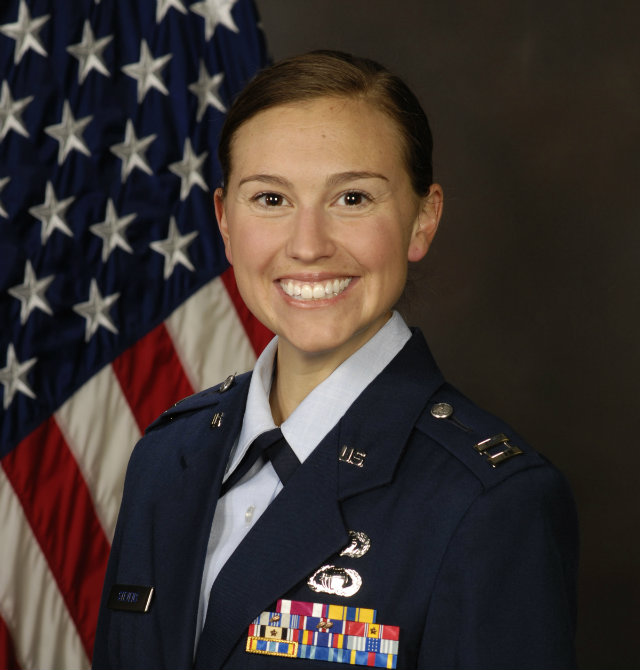What pulled you into aviation?
My exposure to aviation came very early in my life [as] I grew up with a father in the field. His time in the Coast Guard and beyond has been dedicated to aviation – from running Lockheed Martin C-130 maintenance shops, OCONUS [outside the continental USA] to managing a fleet of executive aircraft. More direct contact with the aviation world first came during my intelligence career-broadening tour. During intelligence training, I had to learn a lot about various airframes and how they contributed to the fight. Then, throughout my intelligence assignment, I worked operations planning and collection management for various remotely-piloted aircraft. Coming back to the acquisition community, my assignment to the Lockheed C-5 Galaxy system programme office allowed me to stay close to aviation; supporting a programme that enabled an ageing aircraft like the C-5 to continue to fly for another ten years definitely indoctrinated me into the field.
Where were you stationed?
My first assignment was to the 37th Contracting Squadron at Lackland air force base, where I was the officer in charge of the base support. Here I oversaw execution of $300 million in contractual support for the wing’s 86,000 graduating students. In 2009, I was accepted onto the acquisition and intelligence experience exchange tour programme and worked on intelligence, surveillance and reconnaissance (ISR) planning and operations for the 13th air force and Pacific air forces intelligence directorates at Hickam air force base. From 2013 until early 2015, I was assigned as a contracting specialist to the C-5 systems programme office at Wright-Patterson Air Force Base where I supported $5 billion in contractual obligations to ensure operational capability of the C-5 fleet.

USAF
What are your current duties?
Currently, I am a warranted contracting officer in the ISR section of the special projects branch in the Big Safari contracting office. As a contracting officer, I direct acquisition strategies, negotiate contract arrangements and ensure contractor performance and compliance with contact terms and conditions. I would say my day-to-day duties involve a lot of problem solving so that our assets can stay in the air; figuring out the best way to fill a requirement, working through acquisition strategies with program managers and resolving any issues with contractors. As a contracting officer, you’re never sure what type of challenge you’ll face in any given day, but that’s what keeps it interesting!
Our unit procures combat-ready ISR aircraft and support services for all COCOMs [combatant commands] in support of national security and Department of Defense objectives. We direct rapid-acquisition strategies to minimise the time from requirement identification to fielding capability. We also advise our customers and management on maximising efficiency for expedited acquisitions in support of ISR and Special Operations Forces.
I couldn’t do my job without the contract specialists, programme managers, finance officers, technical experts and myriad of professionals who provide input to the process. When a C-5M completes an airlift or one of our ISR assets completes a mission, I immediately think of all the effort involved and I’m honoured to be part of the teams that enabled those capabilities.
You're upgrading Air Force One?
One of the recent projects our team has been working on is the acquisition of a fleet-wide communications system for the Executive Airlift programme. This effort involves the acquisition of parts and services to complete various communications systems upgrades on multiple executive aircraft, to include Air Force One. Once these mods [modifications] are complete, all the aircraft in the fleet will have a unified way to communicate with each other and the ground. The capability for this seamless communication between these aircraft is vital to our national security and being a part of something at that level that is really exciting!
Source: Flight International
















